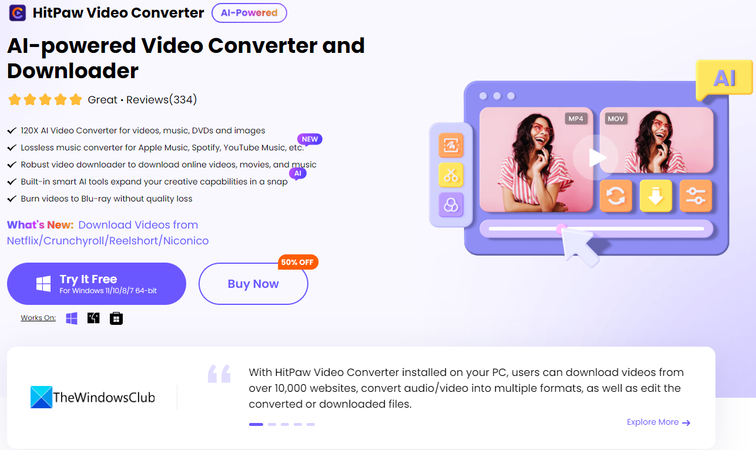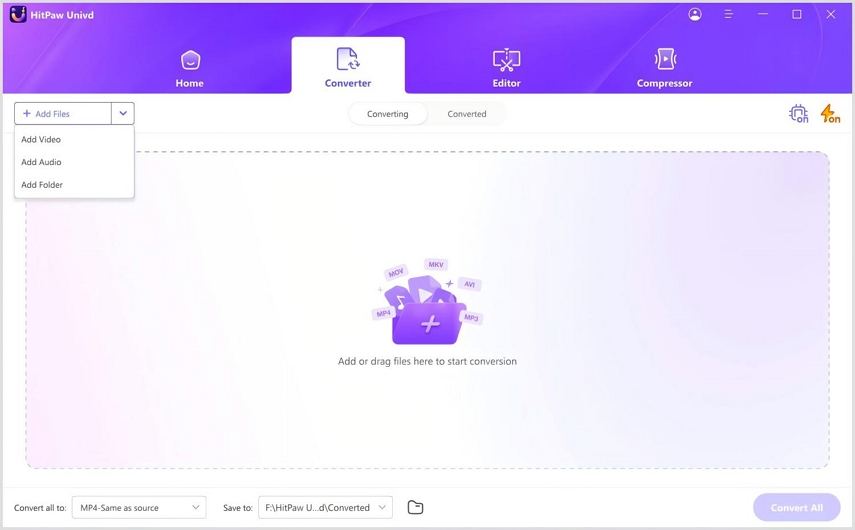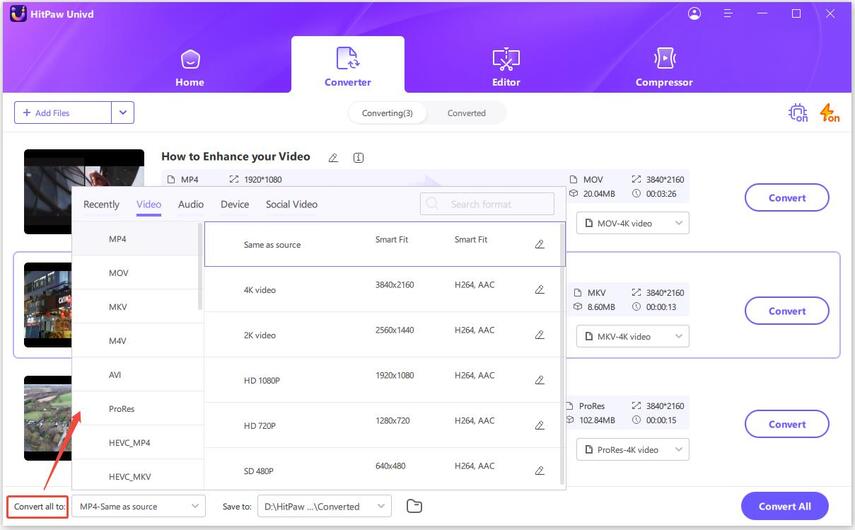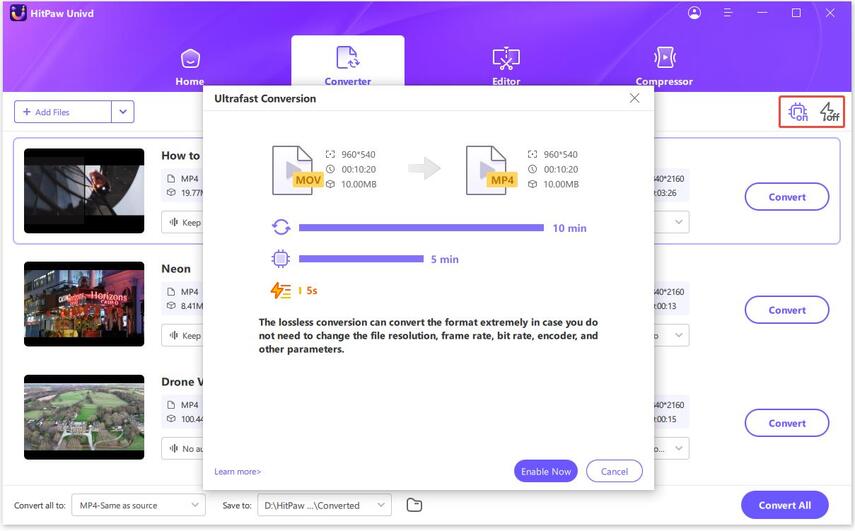How to Convert MOV to MPEG4 in 2025
When dealing with digital video files, understanding the nuances of various formats is crucial. Among the myriad of options, MOV and MPEG4 stand out due to their widespread use in both amateur and professional video editing. This article aims to dissect these two popular formats, providing you with an in-depth comparison of their characteristics, usage scenarios, and overall performance.
Whether you are editing home videos, creating content for social media, or producing professional films, choosing the right format can significantly impact the efficiency of your workflow and the quality of your final product. We will explore the technical aspects, advantages, and limitations of MOV and MPEG4 to help you make an informed decision about which format is best suited to your needs.
Part 1: What is MOV and MPEG4?
MOV, initially developed by Apple as a part of its QuickTime technology, has been a staple in the multimedia creation sphere, particularly for those working within the Apple ecosystem. It is known for its high compatibility with Macintosh operating systems and its ability to handle a large variety of different multimedia formats within a single file.
Pros of MOV:
- High Quality: Ideal for professional video editing due to its ability to store high-quality video, audio, and text.
- Flexibility: Supports various compression algorithms, allowing users to balance quality and file size.
Cons of MOV:
- Limited Compatibility: While excellent for Mac users, it can pose challenges on non-Apple devices without additional software.
- Larger File Sizes: Typically generates larger files, which could be an issue for storage and sharing.
MPEG4, on the other hand, is favored for its ability to compress video files into smaller sizes while maintaining good video quality. It is part of the MPEG group of standards and is used widely for streaming over the internet, in video broadcasting, and on portable devices.
Pros of MPEG4:
- Wide Compatibility: Supported by almost all video platforms and devices, making it highly versatile.
- Efficient Compression: Offers significant compression without a substantial loss in quality, ideal for streaming and downloading.
Cons of MPEG4:
- Quality Loss: Depending on the compression level, it can sometimes lead to noticeable quality degradation.
- Complexity: Encoding and decoding can require more processing power, potentially slowing down older systems.
Part 2: MOV vs. MPEG4: A Fundamental Difference in Compression
When comparing MOV and MPEG4, several core differences affect their application in video production:
1. MOV vs. MPEG4 File Size
MOV files are generally larger than MPEG4 files, as MOV is often used to store high-quality files, which include extensive data on audio, video, and text tracks. This makes MOV files ideal for editing and storage, where quality is paramount, but less practical for streaming or downloading.
2. MOV vs. MPEG4 Compatibility
While MOV files work seamlessly on Apple devices, their compatibility can be limited on non-Apple devices unless additional software or conversion is used. MPEG4 files are almost universally compatible across all platforms, devices, and media players, which makes them extremely handy for content that needs to be viewed on various hardware and software configurations.
3. MOV vs. MPEG4 Encoding Method
MOV files can use various encoders, but they typically employ high-fidelity encoders that do not compress the files as much as MPEG4. MPEG4 uses advanced encoding techniques that allow it to deliver good quality video at lower bitrates, which is why it's favored for streaming and broadcasting.
4. MOV vs. MPEG4 Sound Quality
MOV files generally have better sound quality because they can encapsulate rich audio formats used by professional video editors. MPEG4 files, while also capable of delivering good sound quality, often compress the audio tracks to reduce file sizes, which can affect the audio fidelity.
Bonus Tips: How to Convert MOV to MPEG4 Using HitPaw Univd (HitPaw Video Converter)

HitPaw Univd is a versatile tool designed to make video conversions smooth and efficient, with support for a wide range of formats including MOV and MPEG4.You can take a closer look at HitPaw Univd in the video below.
Main Features of HitPaw Univd:
- Supports a wide range of video formats beyond just MOV and MPEG4.
- High-speed conversions that ensure your files are processed quickly without sacrificing quality.
- User-friendly interface that makes it easy to navigate and use even for those with minimal technical expertise.
- Offers customization options for video encoding to meet different needs and specifications.
How to Convert MOV to MPEG4 Using HitPaw Univd:
Converting video files from MOV to MPEG4 can be effortlessly accomplished using the HitPaw Univd, a tool designed for both novices and professionals. Here's how you can use HitPaw Univd to make your conversions smooth and efficient:
Step 1. Download and install HitPaw Univd from HitPaw's official website

Step 2. Open the converter and upload your MOV files.

Step 3. Select MPEG4 as the output format from the profile menu.

Step 4. Click on 'Convert' to start the process.

FAQs:
Q1. What are the key differences between MOV and MPEG4?
A1. The key differences lie in file size, compatibility, and compression efficiency. MOV files are larger and less universally compatible but offer higher quality, making them ideal for professional use within Apple environments. MPEG4 files are more compressed and widely compatible, suited for distribution and playback across various devices and platforms. Using MPEG4 in professional settings can be advantageous for projects that require efficient storage and transmission. However, for ultimate control over video quality and editing flexibility, higher-fidelity formats like MOV are recommended.
Q2. Can I convert MPEG4 back to MOV without losing quality?
A2. Converting from MPEG4 back to MOV can be done without significant loss of quality if the original encoding parameters are maintained. However, if the MPEG4 file was heavily compressed, some quality loss inherent in the compression process might not be fully recoverable.
Q3. How do I choose between MOV and MPEG4 for my projects?
A3. The choice depends on your project's requirements. If you need high-quality archival footage or are working within an Apple-centric workflow, MOV is preferable. If you need to distribute the video widely or stream it online, MPEG4 is the better choice due to its smaller file size and broad compatibility.
Q4. Does converting a video file from MOV to MPEG4 affect its metadata?
A4. Converting from MOV to MPEG4 can affect metadata depending on the conversion tool and settings used. It’s important to ensure that your conversion tool preserves metadata if it’s critical to your workflow.
Conclusion:
The debate between using MOV and MPEG4 hinges on your specific needs as a video creator. MOV files offer unparalleled quality and depth, making them ideal for professional editing environments, especially within the Apple ecosystem. On the other hand, MPEG4’s strong suit lies in its ability to compress files efficiently without a drastic quality loss, making it suitable for online distribution and playback on a variety of devices.
The choice between these formats should be dictated by the intended use of the videos, the target audience, and the distribution channels. For those looking to maximize compatibility without compromising too much on quality, MPEG4 is a reliable choice. Conversely, for creators who prioritize quality and are embedded in professional editing setups, MOV provides the necessary features.
With tools like HitPaw Univd, transitioning between these formats is simpler than ever, ensuring that you can adapt your media to meet diverse requirements without a hitch. Consider your project's scope and the audience's needs when choosing your video format, and use the right tools to help streamline your production process.







 HitPaw Edimakor
HitPaw Edimakor HitPaw VikPea (Video Enhancer)
HitPaw VikPea (Video Enhancer)



Share this article:
Select the product rating:
Daniel Walker
Editor-in-Chief
My passion lies in bridging the gap between cutting-edge technology and everyday creativity. With years of hands-on experience, I create content that not only informs but inspires our audience to embrace digital tools confidently.
View all ArticlesLeave a Comment
Create your review for HitPaw articles